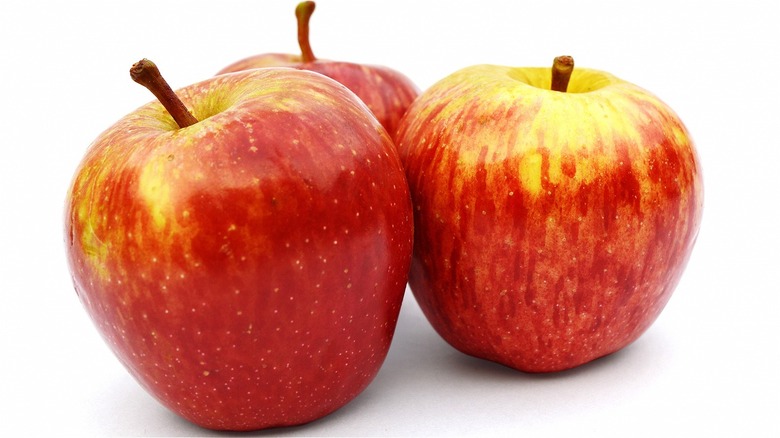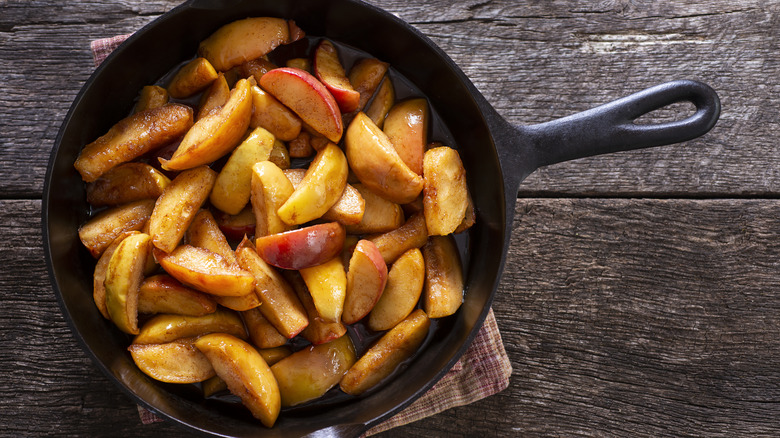Are Fuji Apples Actually From The Town Of Fujisaki?
Apple-lovers can get sweet, juicy Fuji apples from virtually any mainstream supermarket in the U.S., but do you know how this humble fruit came to be so beloved and widespread, or even just how it got its name? Some may guess it originated on the slopes of Mount Fuji itself, but that would be inaccurate by several hundred miles.
These apples do indeed come from Japan, but they don't hail from the world-famous mountain. Fuji apples were actually first grown in Fujisaki, a city in Japan's northern prefecture of Aomori. Growers from the Tohoku Research Station cross-pollinated two popular American varieties in the 1930s — the Red Delicious and Virginia Ralls Janet apples. After years of testing, they developed the crispy, balanced apple we love today, and in the 1960s, it finally hit market shelves in Japan. It was later released in the U.S. in the 1980s, where it found even greater commercial success, leading to its proliferation around the globe.
The versatility of Fuji apples
Today, Fuji apples are sold in a variety of different forms, from sweet desserts to savory dishes. For desserts, Fuji apples bring a good balance of natural sweetness and tartness that can be used to great effect either raw or cooked. For example, you can finely chop them to make a crunchy topping for oatmeal, pancakes, and cereal, or you can make them into delicious caramel apples that won't come out too sweet. For cooked desserts, Fuji apples have dense skin and flesh that add a satisfying texture, even when they're stewed for pies, strudels, or crumbles.
Fuji apples even work well in savory applications thanks to their low acidity and balanced flavors. Simply slice them, then add them to salads or sandwiches, especially those that feature ingredients like bacon, walnuts, spinach, or even blue cheese. Fuji apples are also a pork chop's best friend, as exemplified in skillet pork chops with apples. If you don't like big chunks of apple with your chops, try blending Fuji apples down into applesauce instead. Just don't try replicating any of these dishes with the parent apple, Red Delicious. The two may share a few chromosomes, but the mealy, not-so-delicious texture of a Red Delicious will have you wondering how it's related to the Fuji at all.

